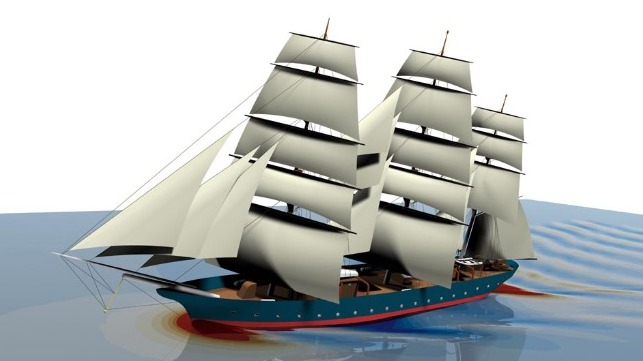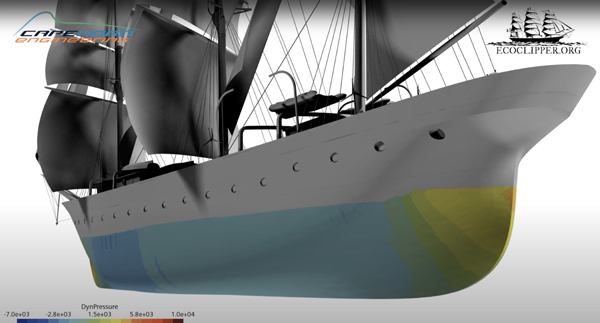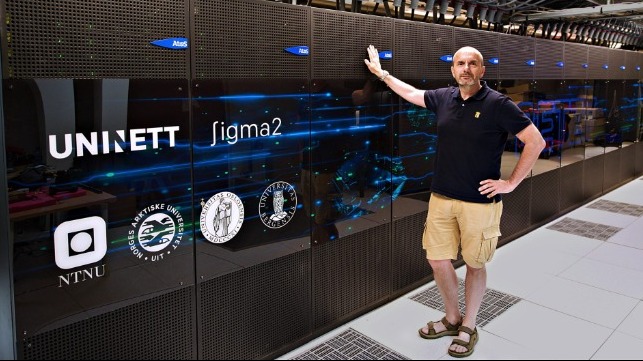By Gabriel Leigh (Bloomberg) Hop on a ferry in Norway and it’s increasingly likely that the rumble of a diesel engine will have been replaced by the quiet hum of an electric motor.
The Scandinavian nation, already a leader in electric cars, has in recent years been churning out zero-emissions vessels that could one day be used all over the world. Right now the ships mostly ply key domestic routes, especially in the mountainous west coast where ferries are an essential piece of the transportation network.
But they’ve already made Norway the most electrified shipping nation in the world, thanks to an aggressive government push to cut maritime emissions. The country is home to almost three-quarters of the 274 vessels globally that run at least partly on batteries, according to a state advisory body. Its fleet of 31 fully-electric car ferries is expected to nearly double by the end of the year, says the Green Shipping Programme, a public-private partnership that supports the transition. Even the sightseeing ferries that cruise Norway’s famous fjords are transitioning to battery power.
On a Saturday morning in Stavanger, along Norway’s west coast, a new ferry, the Rygerelektra, is in the harbor preparing for a tour of some nearby fjords. Measuring 42 meters long with a seating capacity of nearly 300, the ferry is owned and operated by Rødne Fjord Cruises. It is among a group of vessels from several of Norway’s leading maritime companies that are driving a shift towards a zero-emissions fleet and supporting Norway’s ambitious economic reinvention away from oil and gas to an alternative energy source.
“We have this closeness to the ocean in Norway, and the pinnacle of Norwegian business somehow has always sprung out of that,” says Silje Bareksten, chief sustainability officer at 3 Norske AS and a former official at Nor-shipping, a biannual maritime trade fair held in Oslo. Today, Bareksten says, the “need to find new, ecologically and financially sustainable ways of doing business in the years to come” is gaining wider acceptance among among public and private entities, and helping to build momentum in the right direction.
When the Rygerelektra debuted last summer, a state broadcaster in Norway described it as the fastest and longest-range electric ferry in the world, a difficult feat for machinery that is battery-powered. Just as with electric automobiles, range anxiety, or rekkeviddeangst, is a real fear, acknowledges Lars Rødne, the cruise operator’s chief executive officer. “You have to make sure you can come back!”
A large liquid crystal display on the bridge highlights the vessel’s battery status at all times. The Rygerelektra typically starts with an 85% charge. After a three-hour, 40 nautical mile round trip through the fjords – it runs at around 15 knots, but, the company says, can handle 23 knots in speed tests — the ferry winds up back in Stavanger with about 15% battery power remaining.
Rygerelektra was built by Brødrene Aa, a small family shipbuilding firm tucked inside a fjord a few hundred miles to the north of Stavanger. The company made a name for itself in the early 2000s as a pioneer in the use of carbon fiber fast ferries, vessels that largely cover trunk routes between cities along Norway’s west coast. They have over 60 such vessels today, covering deliveries in Norway and to Asia — workhorses that move quickly, and weigh far less than counterparts made from traditional metals.
Over the last few years, Brødrene has branched out into all-electric vessels, delivering its first, a sightseeing ferry named Future of the Fjords, in 2018. It took the company just two years to make the leap to a fully battery-powered ship after producing a predecessor ship, Vision of the Fjords, that uses a hybrid engine.
Higher efficiency carbon fiber vessels have allowed the firm to begin exploring battery-powered alternatives. “We’re going through different phases, like in the car industry,” says Lars Gimmestad, the deputy CEO at Brødrene. “The first phase was lowering emissions on traditional fuels. In one test we did, the carbon fiber reduced the fuel costs 40%. And then we stepped into the next phases.”
Transport by sea is critical for people and goods in Norway’s maritime regions. Road travel is slow, given the landscape and the fjords. Even though air service is an option to reach certain small communities, many rely on ferries. The Norwegian government has set out to cut emissions from domestic shipping and fisheries in half by 2030.
For now, Norway’s faster, long-distance ferries — the kind that traverse the sea at 30 knots-plus between larger coastal cities — still run on diesel. The energy density of even the most advanced batteries simply isn’t enough. On the Rygerelektra, an entire room, like some kind of science fiction walk-in closet, is filled with batteries hidden behind white metal doors marked with high voltage warnings. Inside a series of fans whirred along at high speed to keep everything cool, drowning out most other sound. All to power a motor not much bigger than a large suitcase.
That’s led companies like Brødrene to focus on further developing and refining the technology, whether by turning to alternative fuel sources, such as hydrogen, utilizing more efficient, weight-reducing designs, improving battery technology, or some combination of all. “We’re just getting started,” says Gimmestad. “As soon as we get the technology advanced a bit further and we have concepts out there that can prove distance and speed that are a bit higher than today, then I think this will come with real force.”
Norway’s oil and gas wealth is what allows the country to fund an ambitious push away from fossil fuels. The government sees this as the time to plot out a post-oil future that allows Norway to maintain its current living standards using other revenue generators (and transport methods). The oil industry remains important, of course, but it is well understood that it won’t continue as it has forever.
European Economic Area rules prevent Norway from directly subsidizing many of these projects, but it can reduce the financial risks for homegrown clean energy technology and defray the higher costs of buying advanced electric vessels. In 2019 ENOVA, a state-owned enterprise that distributes funds to accelerate the transition to cleaner energy, made new commitments totaling about $638 million, more than double that of the two previous years. The money funded almost 1,500 distinct projects, including the introduction of a fully electric tugboats in Oslo. Rødne received about $2.2 million in grants to offset the cost of Rygerelektra.
Government restrictions are also accelerating the shift. Diesel ships will be banned from all of Norway’s UNESCO-designated fjords starting in 2026. Some operators have already made the switch. The Lysefjord, where Rygerelektra operates, doesn’t currently fall under that ban, but Lars Rødne thinks it’s going to extend everywhere eventually, beyond UNESCO sites.
“In Norway, we need to transition from oil exports to sustainable products and services, while still utilizing the competence we have gained from the oil industry, says Pia Meling, vice president of sales and marketing at Massterly, the autonomous shipping company. “We would like to compete on the renewables and in clean shipping in particular.” Massterly’s vision is one of zero-emission, autonomous vessels moving everything from passengers around Norway to containers across oceans.
Stavanger is Norway’s oil capital. The quaint city has traditionally been a shipbuilding hub as well. Just across the water from the Stavanger harbor a massive tanker is under construction, its hull still a skeleton in parts. Rødne worries that a major bottleneck for them is the lack of a high-voltage charging system at the dock.
That will become a more pressing concern as Norway’s fleet of electric ships grows. Local ferry operator Kolumbus, for instance, has announced plans to go completely emission-free by 2024. With this in mind, Rødne is working with energy company Lyse, as well as future electric-boats operators, to build infrastructure in Stavanger to support fast-charging of multiple vessels at once.
Local governments can be conservative when it comes to installing new electrical infrastructure. “There’s a lot of politics around what we’re allowed to do here,” says Rødne, who hopes the new fast charger will be online at some point this year. “It’s taking more time than we’d like. But there’s a good progression now.”
Charging infrastructure and insufficient electrical grid capacity are emerging as a serious potential issue standing in the way of all-electric transport well beyond shipping. A future world in which trucks, ferries and other commercial operators run on electricity is expected to add great deal of added demand on the existing grid. Yet there has been growing resistance in Norway to onshore wind power – likely needed for generate more clean power.
Still, solutions are emerging. Another Brødrene electric ferry that runs in the remote town of Flåm, cruising the UNESCO-listed Nærøyfjord, risked faced the problem that the local grid might not be able to support the kind of voltage it would need to charge quickly enough to stick to its schedule. So a special charging dock was developed, something like a power brick for a phone except much larger, that would slowly charge off the grid continuously, and then deliver a fast charge directly to the ship whenever it came in to dock.
For all the developments, the public and some in government have questioned the pace of change. Kirsten Å. Øystese, project manager at the Norwegian Climate Foundation in Bergen, says Norway’s progress in electrifying its maritime fleets is impressive, and ahead of many other European countries. But challenges remain.
“The shipping sector is almost entirely dependent on fossil fuels, and still needs to make substantial cuts in emissions to play its part in meeting the Paris Climate Agreement goals,” Øystese says. “The sector must aim for net zero emissions by 2050, and that will require significant increase in use of batteries, shore power and hydrogen-based fuels such as ammonia.”
Meanwhile Brødrene is making moves to serve markets beyond Norway. The firm attracted the interest of Chinese shipping giant Chu Kong Shipping in 2016, a meeting which led to the formation of a joint venture and a shared production facility in Guangzhou. There they crank out their signature carbon fiber diesel ships for use in the Pearl River Delta, a market with enormous potential for both conventional and electric vessels. Another potential market is Hong Kong, which has been looking closely at electrifying their vast commuter ferry fleet.
Interest has also come from San Francisco’s Water Emergency Transport Authority (WETA), which wants to explore options for moving to zero-emissions as they expand ferry service in the Bay Area. There’s plenty of potential, but the priority for Brødrene now are the contracts it has with ferry operators throughout Norway. Growth with international clients, while promising, will have to come gradually, says Gimmestad.
The math works out for potential investors, says Brødrene Chief Executive Officer Tor Oyvin Aa. The emission-free ferries are more expensive to acquire, but “capital is very cheap now,” he says. For example, companies might invest about 30% more in upfront costs, but save twice that on fuel.
And those numbers continue to get better. While batteries weighed around 12 kilograms per kilowatt-hour (kWh) of power just a few years ago, they’re now at around 8kg per kWh and could get to 6kg/kWh soon. In 2016 Brødrene delivered Vision of the Fjords which could run 8 nautical miles on electricity. By 2018, it produced the Legacy of the Fjords that managed 20 nautical miles fully electric. Now Rygerelektra can serve a 40 nautical mile route.
Aa says the biggest opportunity will be in commuting ferries, and from coastal cities on the Mediterranean in particular, helped in part by the depressed oil price which has weakened the Norwegian krona and made their ships cheaper for Europeans. In January the company sold three of its latest “Aero” carbon fiber diesel ferries to a Greek operator, and more orders, potentially including electric variants, are expected from the region.
“There are traffic jams just about everywhere now,” says Aa. “So if you can move people onto the waterways and do it emission free, that’s really something. The water is lying there,” he says with a smile. “You don’t need maintenance on the sea. And it costs less and it’s emission free.”



















